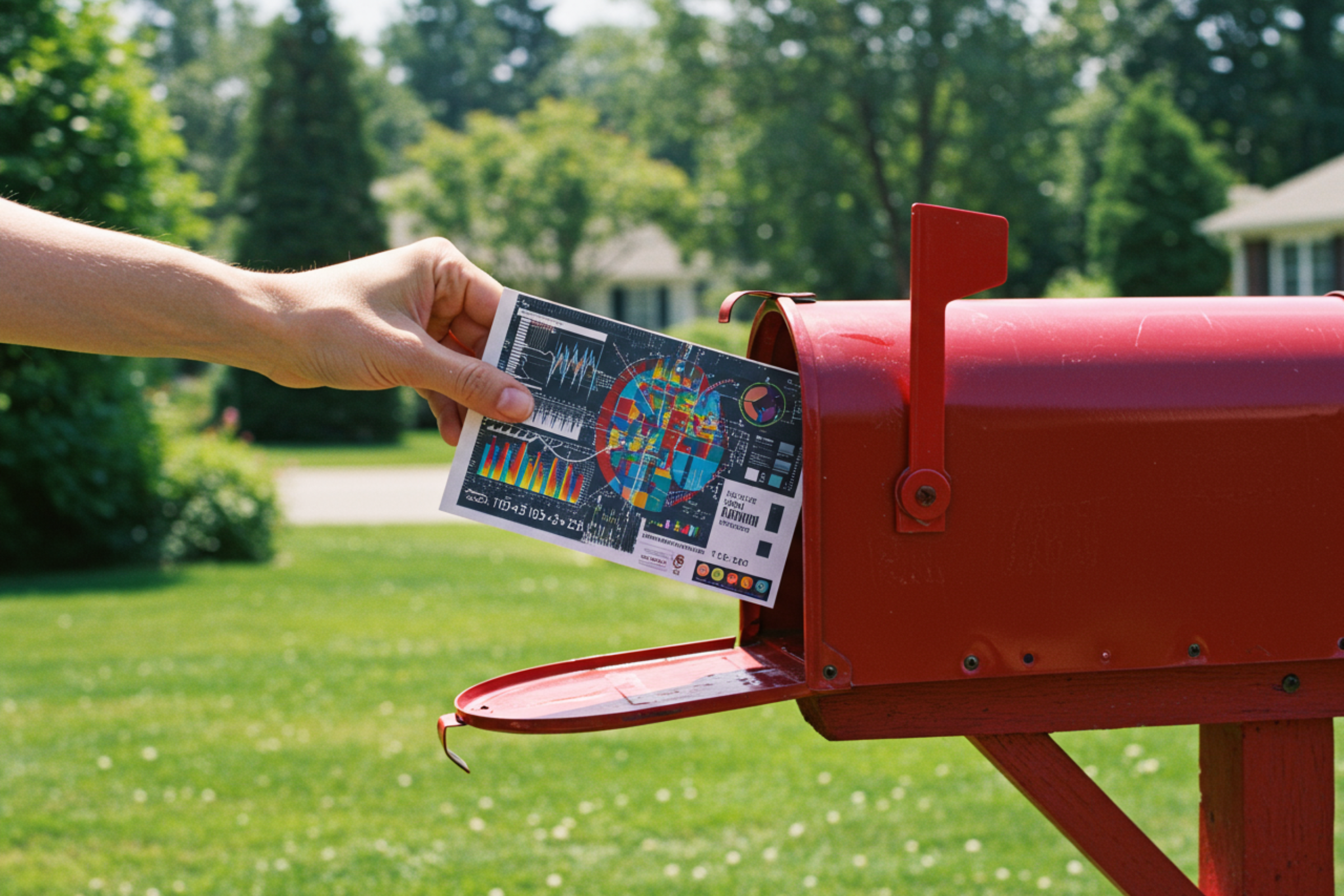How Direct Mail and Geo-Targeting Drive Local Small Business Success

Unlocking the Power of Direct Mail in the Digital Age
In an era dominated by social media feeds and overflowing inboxes, direct mail might seem like a relic of the past. Yet, this "old-school" marketing tool continues to thrive, especially for small businesses seeking tangible ways to connect with customers. Unlike digital advertisements that can be scrolled past or emails that land in spam folders, direct mail lands physically in the hands of recipients, making a real-world impact that’s hard to ignore.
Direct mail excels because of its personal touch. When a customer receives a well-designed postcard or letter, it stands out amidst piles of digital communication. Studies consistently show that direct mail enjoys higher open and response rates than most digital channels; recipients are more likely to review, remember, and act on physical mail. This is partly due to its psychological effect—handling a tangible piece of mail creates a stronger memory trace, leading to better recall and increased trust in the sender.
Today’s direct mail campaigns have evolved. Advanced printing, data analytics, and personalized messaging allow businesses to deliver tailored content to specific audiences. This blend of tradition and innovation ensures direct mail maintains its position as a highly effective marketing channel, especially when integrated with other modern marketing techniques.

How Geo-Targeted Postcards Drive Precision Marketing
Geo-targeted postcards take the power of direct mail to the next level by focusing outreach efforts on the most relevant recipients. Geo-targeting involves tailoring marketing efforts based on the geographic location of potential customers, most commonly identified by zip codes. This approach enables small businesses to zero in on neighborhoods or communities where their products or services are most likely to resonate.
By sending postcards to carefully selected zip codes, businesses can reach audiences with specific demographic or lifestyle characteristics, ensuring their message is both timely and relevant. For example, a local gym might target areas with a higher concentration of young professionals, while a landscaping company could focus on neighborhoods with larger residential lots.
Personalization is at the heart of geo-targeted campaigns. When recipients feel that a message is meant specifically for them, they are more likely to respond positively. Geo-targeted postcards also help businesses maximize their marketing budgets by concentrating resources on high-potential areas rather than spreading efforts too thin. This targeted strategy enhances the likelihood of higher response rates and improved ROI.
For small businesses, geo-targeting with postcards offers a practical, cost-effective way to build brand awareness, increase foot traffic, and drive sales in the communities that matter most.

Identifying and Reaching High-Value Zip Codes
Selecting the right zip codes is crucial for a successful direct mail campaign. High-value zip codes are those areas where your ideal customers live, work, or shop—places with demographics, income levels, and lifestyles that align closely with your offerings. Identifying these zones requires a mix of data analysis and strategic thinking.
Start by analyzing your existing customer base. Gather addresses from past buyers and use this information to spot patterns—are most of your customers concentrated in a handful of zip codes? Publicly available resources, such as census data or market research reports, can further illuminate demographic and economic trends by region. Look for indicators like average income, home ownership rates, or population density that align with your target market.
Many online tools and mapping platforms enable you to overlay customer data with zip code boundaries, helping visualize where your best potential lies. Once high-value areas are identified, you can refine your offers or messaging to reflect local preferences. For instance, a pet supply store might highlight dog-friendly parks in its postcards to neighborhoods known for pet ownership.
Implementing targeted mailing lists is straightforward. Several services allow you to purchase or rent mailing lists filtered by zip code and other criteria. This ensures your postcards are delivered directly to the households most likely to respond, turning data insights into real marketing impact.

Tracking and Measuring Direct Mail Campaign Success
To ensure your direct mail investment pays off, it’s essential to track the performance of each campaign. Modern tracking methods make it easier than ever to measure response and ROI, turning direct mail into a data-driven marketing channel.
One effective technique is to include unique promo codes or personalized URLs (PURLs) on each postcard. When a recipient uses the code during a purchase or visits the custom web address, you can directly attribute that engagement to your mailing. QR codes have surged in popularity, offering a seamless way for recipients to access digital content, redeem offers, or book appointments by simply scanning with their smartphones.
Monitoring response rates—how many recipients take action after receiving your mail—provides insight into campaign effectiveness. Track not only the number of responses but also the quality: do these leads convert into sales, and are they resulting in loyal customers? By integrating direct mail responses with your broader digital analytics, you gain a holistic view of your marketing performance.
Finally, use the data collected to refine future campaigns. Analyze which zip codes, offers, or postcard designs generated the best results and adapt your strategy accordingly. This ongoing process of measurement and optimization is key to maximizing ROI and ensuring that every direct mail dollar works as hard as possible for your business.

Bridging Traditional Tactics with AI Marketing Tools for Enhanced Results
The intersection of traditional direct mail and cutting-edge AI marketing tools is opening new possibilities for small businesses. AI-driven solutions can streamline and supercharge every stage of a direct mail campaign, from content creation to targeting and measurement.
Automated content creation tools can craft compelling postcard messages, adapting tone and visuals to suit specific audiences or campaigns. This not only saves time but ensures consistency and professionalism, even for business owners without a background in design or copywriting.
AI excels at analyzing large volumes of data, making it easier to identify high-value zip codes and segment audiences with precision. By combining past customer data, demographic insights, and predictive analytics, AI tools suggest the most promising areas and personalized offers for each segment.
Personalization, once labor-intensive, is now scalable thanks to AI. Each postcard can be customized with names, relevant offers, or even local references, increasing the likelihood of engagement. AI-powered analytics also provide real-time feedback on campaign performance, allowing for rapid adjustments and improvements.
Integrating these tools into your workflow doesn’t require extensive technical expertise. Many platforms offer user-friendly interfaces tailored to small business needs, making sophisticated marketing accessible to all. By blending the tangible impact of direct mail with the intelligence of AI marketing, small businesses can achieve higher ROI, greater efficiency, and stronger customer connections in today’s competitive landscape.